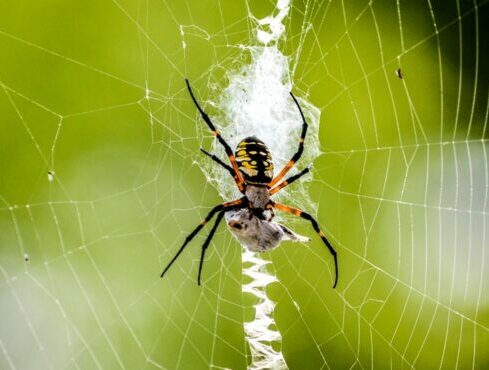Maybe it’s because my second grade teacher read Charlotte’s Web to our class.
Or maybe it’s because I was fascinated as a kid by the beautiful patterns of their webs that I saw in our garden. Whatever the reason, I’ve long had a fondness for garden spiders (Argiope aurantia), those large yellow-and-black ones that create those intricate webs with the zigzag pattern in the center.
Last month I was delighted to find two, one on each side of my porch. I began watching them, noticing how they became larger, their abdomens swelling with the promise of new life. Then, in the last two weeks each of them disappeared from their web for a couple of days as they left in search of a suitable place to weave a silken sac in which to lay their eggs. I found one of their tidy little packages the other day, carefully secured just below the overhang of siding on my house.
In previous years I’ve more often discovered them attached to the stalks of plants in my flower garden, visible only after the foliage had died after a hard frost.
Because of that, I tend not to trim back my plants until well into spring, so that garden spiders and other creatures such as butterflies that use dead vegetation for overwintering purposes are not affected.
That’s a practice everyone who’s interested in having a wildlife-friendly property should consider adopting. Sure, it may look less than neat to leave lifeless stems in place, but the next generation of small creatures will thank you.
Featured photo by Courtney Meeks




